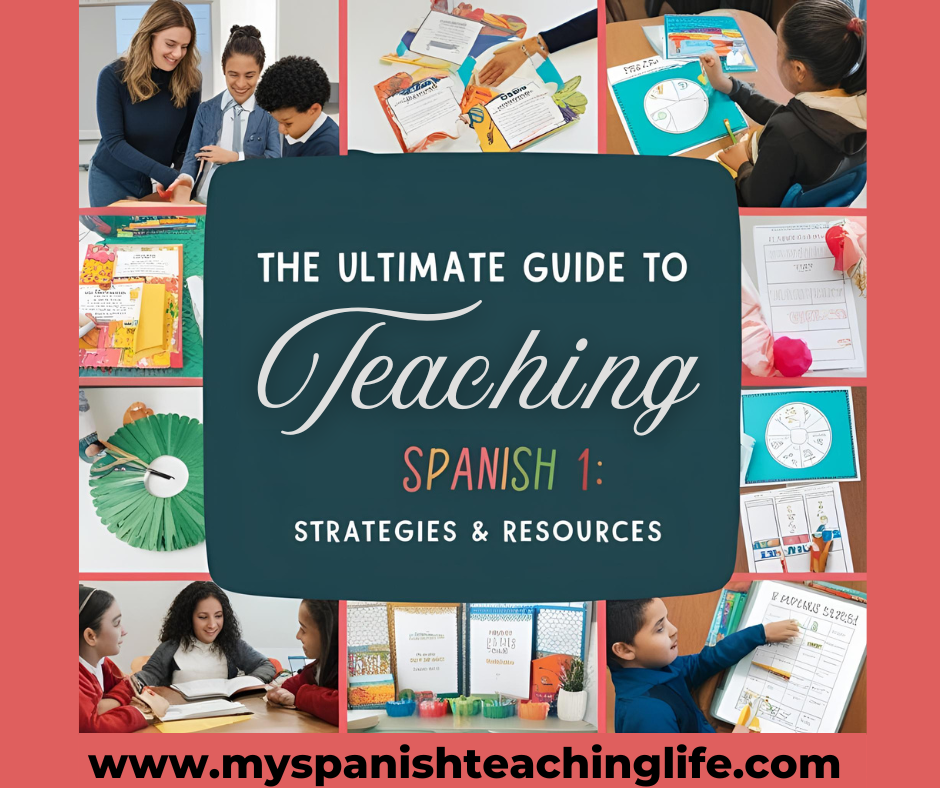The Ultimate Guide to Teaching Spanish 1: Strategies & Resources
Teaching Spanish 1 can be both exciting and challenging. Many students are learning a second language for the first time, and it’s essential to create an engaging and supportive environment. This guide will walk you through key strategies, lesson ideas, and resources to make your Spanish 1 class a success.

1. Understanding the Needs of Spanish 1 Students
Students in Spanish 1 often have little to no prior knowledge of the language. Your goal is to build their confidence and help them develop basic communication skills. Focus on:
- High-frequency vocabulary
- Simple sentence structures
- Listening and speaking practice
- Cultural exposure
Creating a welcoming atmosphere where mistakes are encouraged as part of the learning process is key.
2. Essential Units & Topics to Cover
To set a strong foundation, your Spanish 1 curriculum should cover:
- Greetings & Basic Conversations – Saying hello, introducing oneself, asking basic questions
- Classroom Commands & Common Phrases – Essential phrases for everyday use
- Numbers, Dates, and Time – Practical vocabulary for real-world application
- Describing People & Objects – Adjectives, colors, and personal descriptions
- Family & Personal Life – Discussing family members, pets, and interests
- Food & Shopping – Ordering food, grocery shopping, and related vocabulary
- Daily Routines & Activities – Talking about schedules, hobbies, and daily life
Integrating culture with each topic will enhance student engagement and understanding. Your school district will more than likely have a curriculum or a curriculum guide that will give you more specific clarity on which topics to teach.
3. Strategies for Effective Teaching
A. Comprehensible Input (CI)
Use visuals, gestures, and simple language to ensure students understand the material. Techniques like storytelling, picture talk, and movie talks can be highly effective.
B. Speaking & Listening Practice
- Use daily warm-up speaking activities
- Incorporate partner conversations
- Play listening games with music, short clips, or real-life dialogues
C. Interactive and Engaging Activities
Make learning fun by incorporating:
- Role-playing scenarios
- Games like Kahoot, Quizlet Live, Gimkit, and Blooket
- Total Physical Response (TPR) activities
- Music and movement to reinforce vocabulary
D. Classroom Management & Student Engagement
Encourage participation with reward systems, interactive notebooks, and frequent formative assessments. Keep activities varied to cater to different learning styles.
4. Recommended Resources & Tools
- Websites & Apps: Duolingo, Señor Wooly, LyricsTraining
- YouTube Channels: Dreaming Spanish, Spanish Playground, My Bilingual Life
- Printable Resources: Teachers Pay Teachers, Spanish Mama’s free resources
- Books: Easy Spanish Reader, Pobre Ana (novel for beginners)
5. Free Download: Spanish 1 Lesson Plan
To help you get started, download a free Spanish 1 lesson plan covering basic greetings and introductions.
Final Thoughts
Teaching Spanish 1 is a rewarding experience that sets the foundation for language learning. By focusing on comprehensible input, engaging activities, and structured lessons, you can create a classroom environment where students feel confident and excited to learn Spanish.
What are your favorite strategies for teaching Spanish 1? Share your thoughts in the comments!